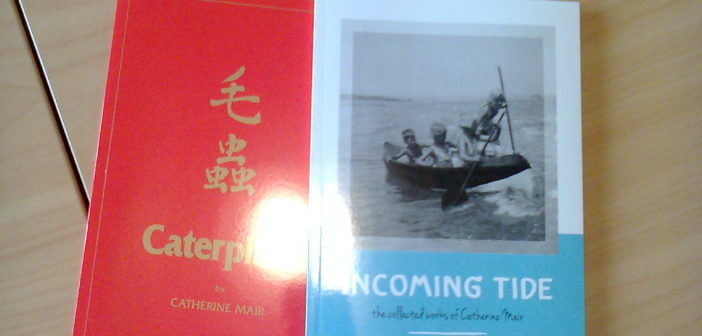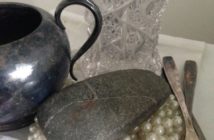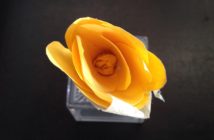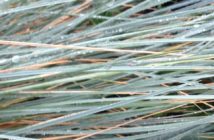The haiku pathway which meanders alongside the Uretara Stream and through the riverland park area of Katikati is as big a cultural and tourist drawcard as the colourful street art murals for which the town is internationally known. This year’s (2016) Haiku Competition is underway: winning entries will be immortalised. (See the end of this article for competition details)
There is a small advertisement in the Katikati Advertiser, one of the endearing and detailed locally focused newspapers that still abound in the Bay of Plenty. Well-known poet,writer and Kokako Editor Margaret Beverland is to hold a haiku workshop. I had such a great time when I went to the Tauranga Writer’s Poetry Workshop, I thought I’d make the 20 minute trip up to Katikati.
The workshop is to take place in Katikati’s Resource Centre. The Centre sits close to Katikati College in a broad and tree-lined street running parallel with the State Highway 2 which contentiously bisects the traditional strip shopping centre that is the Katikati Village. I don’t often come this back way, more’s the pity as Katikati has a significant village atmosphere, so I drive straight past the centre, U-turn and then park beside the building.
I’m early – I’m always either early or late as it’s difficult to second guess State Highway 2 traffic. I was so early that I’d stopped in the main street to buy a date scone – the size of a small house. I walk through the Centre foyer, crowded with advertisements and information into a large and amazingly clean kitchen. There are boarding school rules on the walls which account for its pristine condition. After greeting the workshop leader, Margaret Beverland, I stand nibbling out of my paper bag and sipping tea. That’s how I meet one of the local Probation Officers – I bang on about the positive and therapeutic aspects of poetry writing.
The workshop participants gradually accumulate. I see one face I know from an iconic organic orchard! I take the seat closest to the door – old habits die-hard. There is an interesting and eclectic group of “poets” at the table. . Some are haiku habitues and don’t need to be told what haiku is. I do -”of Japanese origin, haiku are short, simple poems generally three lines long” We’re handed out a wedge of haiku-informative notes.

Margaret Beverland and Kokako the Haiku journal
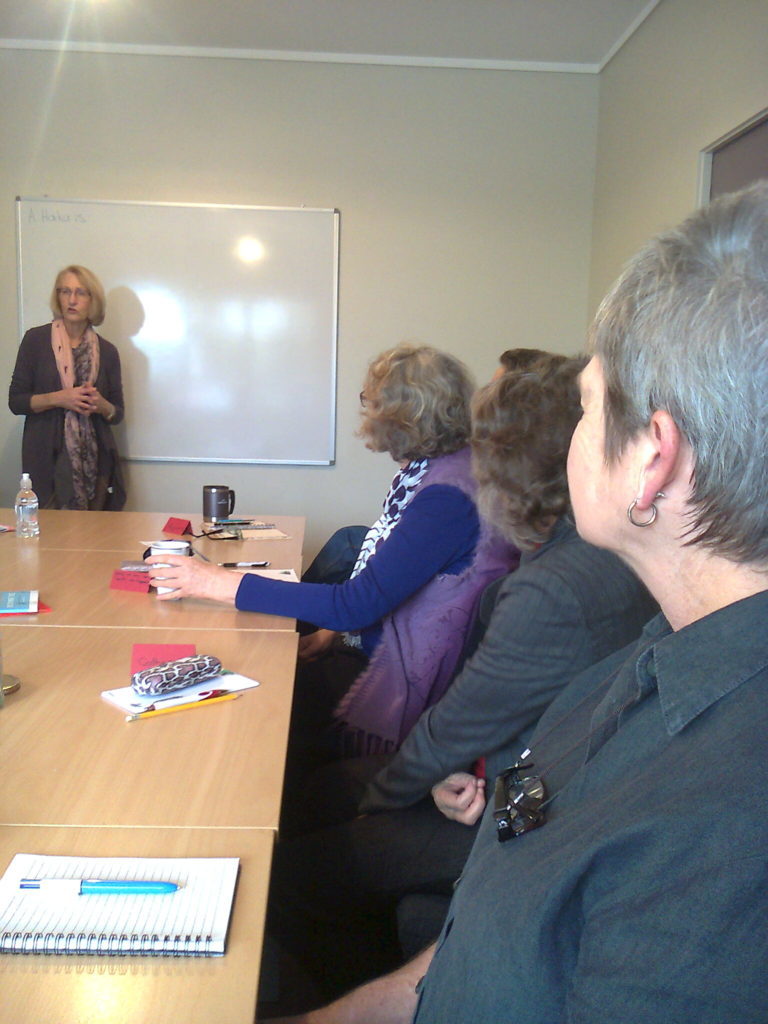
Learning the art of Haiku
It’s down to business – the business of economical and minimalist word formations which if achieved speak volumes. We’re asked to read from the work sheets. One haiku-hand tells us it is obligatory to read each haiku twice. So we do.
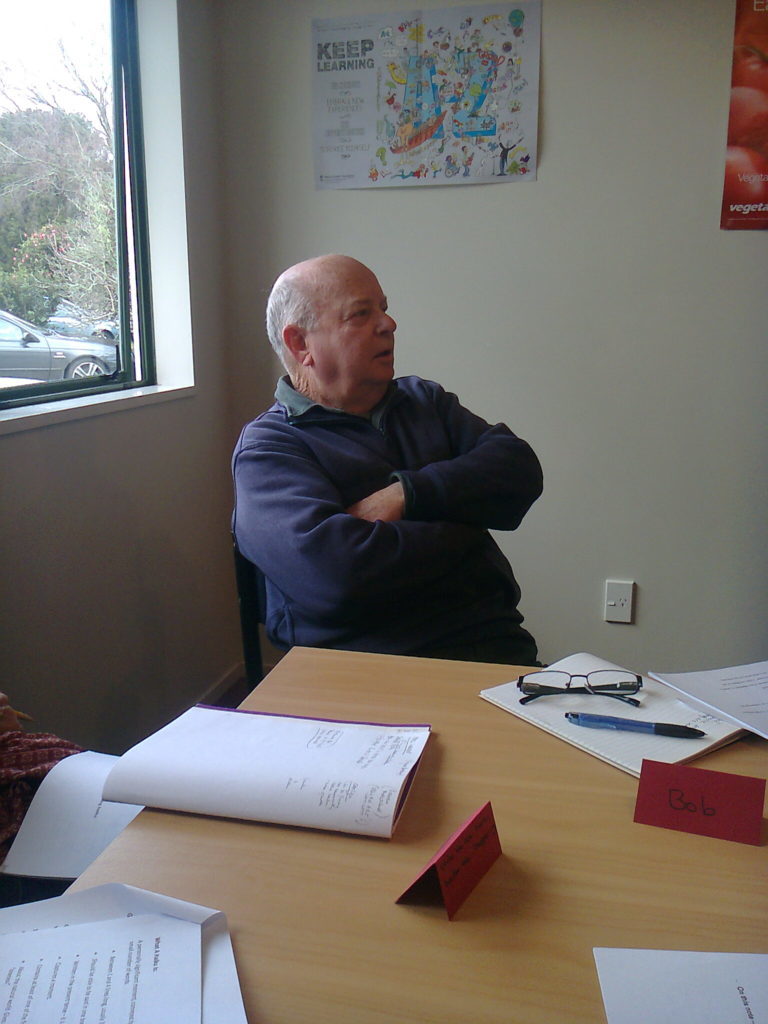
Enjoying the art of haiku
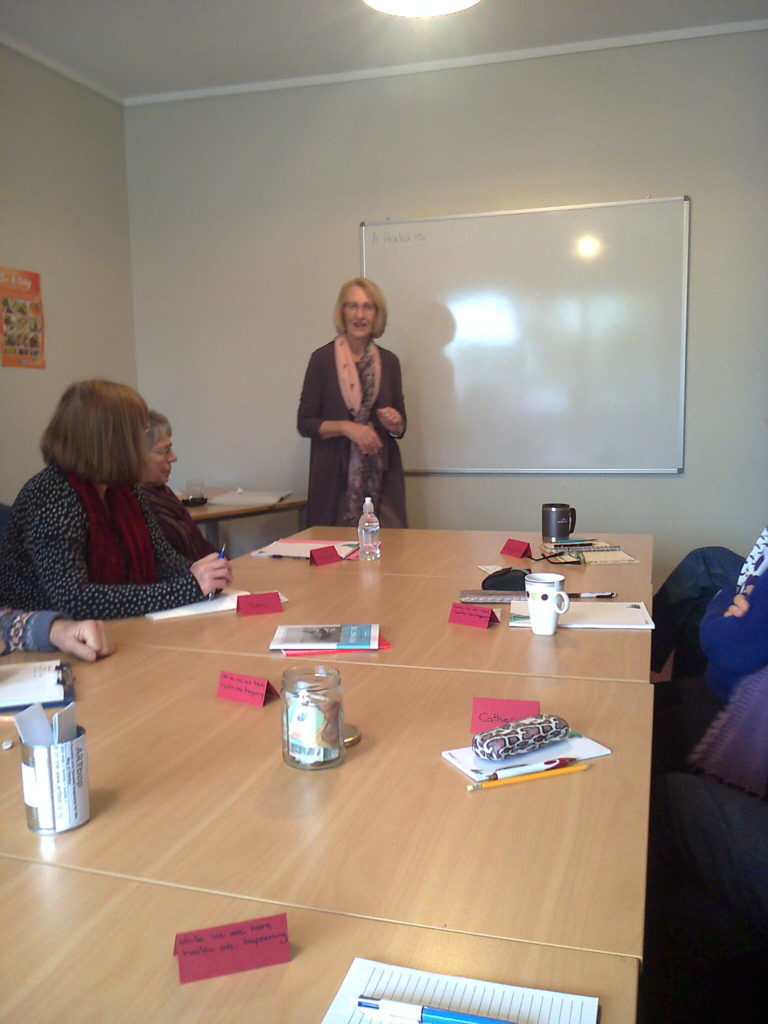
Explaining the art of haiku

Discussing the art of Haiku

Sharing the art of haiku
We break for morning tea and like naughty and noisy schoolchildren are repeatedly shushed by the leader of the yoga group in the room adjacent to the kitchen. If you didn’t know – writing workshops make you talkative, excited and get your brain zinging. Ms Beverland is an excellent workshop leader so the noise and excitement was to be expected.
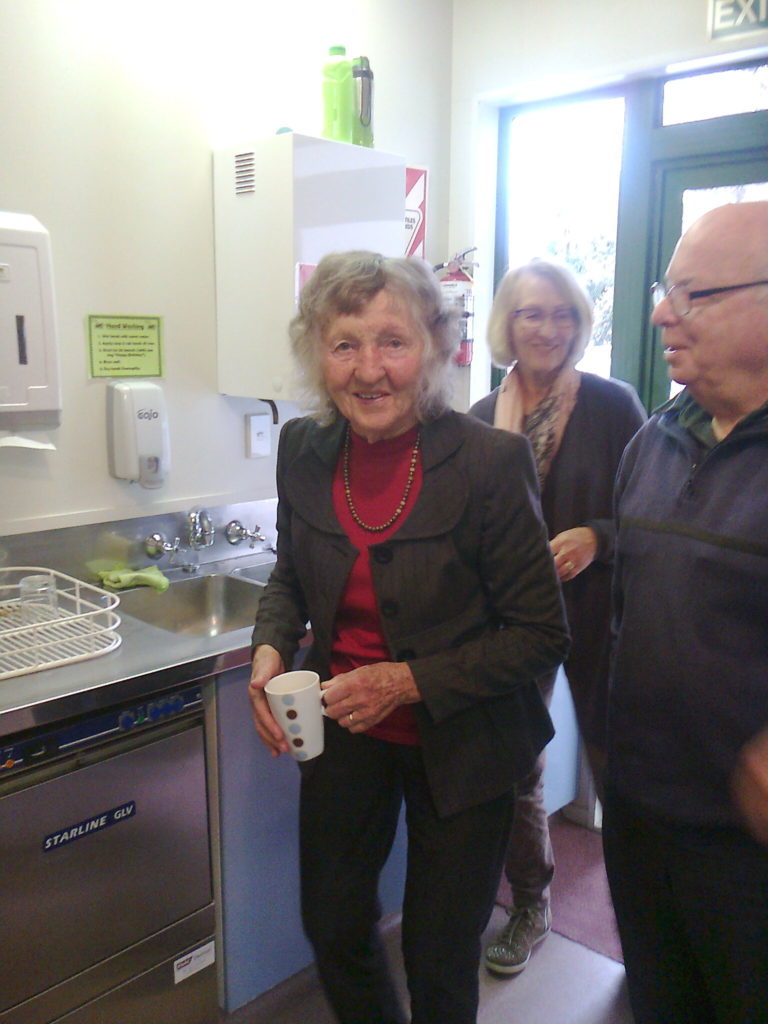
The amazing Catherine Mair at morning tea
Then, it’s outside to gain environmental inspiration and have a go at our own haiku. Keeping in mind that this is an ancient Japanese-derived form of word art, it’s unlikely that what we write is going to be anything other than laughable. But what the heck. And again just like a schoolgirl, one of the others and I stand in the carpark talking about everything unrelated to haiku.
My new friend has purple shoes, so while we’re talking the brain is composing “lichen, magenta fringes, geriatric magnolia” There’s a huge old grapefruit tree over the road “shining distant tree, grapefruit orbs, half eaten quarters” And as we’re next door to the ambulance station:- “ambulance stands, imposing kauri, rangatira leaves”.
We have to read what we’ve written. My new friend is English and wants me to explain what “rangatira” are. I stop explaining my words when it’s clear the rest of the table is getting restless. And anyway – what made me write it and what it means to me is irrelevant to any reader. Nothing I wrote bore any resemblance to a haiku – but who cares I had the most amazing time.
To complete a magic morning, I’m invited by two of the participants to have lunch with them at Robert Harris down on the main road. First I extract another gem out of this morning’s group.
Catherine Mair, one of the originators of the Katikati haiku pathway and former Haiku Group Chairperson, tells me that in the late 1990’s the creation of the pathway was chosen as a Millenium Project ( an indication of a really smart community). Catherine notes that the pathway has developed from relatively small beginnings; there were 24 when the Millenium Project opened. Now there’s a range of media and style of presentation – most are carved into huge boulders but there are some on brass and steel plates. It’s clear that Catherine and her team have created a legacy and a tourist attraction for their town. I feel very privileged to have spoken with her and to see the collections of poems she has brought along (Note – Creative Bay of Plenty in Willow Street Downtown Tauranga has Catherine’s latest collection of work “Incoming Tide” for sale)

Haiku Katikati – the works of Catherine Mair
After lunch I wander down the main street – there are many changes since my last article about this Bay of Plenty Village: I’m entranced by Harry Maddox a new and stylish manufacturing jeweller and objets d’art store. I tell the working jewellers that “I’m coming back”
Laugh out loud – when I bring ARTbop’s Poetry Editor Sam Woodward up to meet Margaret Beverland we’re early – yes again. So I suggest we take a look at the haiku pathway. I walk us straight past the large and distinctive signpost advertising the start of the pathway. If you’re coming from Tauranga the stainless steel slasher shaped sign is on the left, just past the little off-road shopping centre. If you’d like a day out, Katikati’s got everything – including walks of varying lengths, cafes, bakeries, a vintage musical instrument shop and now the Katikati Museum! (eat your heart out Tauranga).
What are Haiku? “Of Japanese origin, haiku are short, simple poems generally three lines long. Haiku are not intellectual thoughts; they are moments – what is happening now. Haiku can contrast and compare two images, which appeal to one or more of the five senses. Haiku use ordinary language to show the extraordinary. Generally, contemporary English haiku are able to be said in one breath and because they are concerned with nature, often contain a “season word”. The best haiku will reward repeated readings, revealing more each time. (From the Katikati Haiku Pathway brochure. For more information contact the Katikati Information Centre, 34 Main Road, Katikati Phone 07 549 1658. www.katikati.org.nz )
And the competition:
KATIKATI HAIKU CONTEST 2016
Prizes sponsored by Kings Seeds
http:/www.kingseeds.co.nz
All proceeds go to the Katikati Haiku Pathway project.
Rules:
- Poems should preferably be typewritten, otherwise clearly handwritten. Several poems on one sheet are fine.
- Submit 2 copies of each haiku, or each haiku sheet, with 1 only including your name, address, phone number, email address, and for the junior section only, age.
- Haiku should not have been previously published (including on the web or broadcast).
- Entry fee: 18 & over – $5 for 3 haiku or $2 for 1 haiku. 17 & under – $1 for up to 2 haiku.
- Any entry not accompanied by the correct entry fee will be disqualified. Entrants send cash at their own risk. Make cheques payable to: Katikati Haiku Pathway Committee.
- Prizes: 18 & over: $100 for first; $50 for second and $25 for third. 17 & under: $50, $25, $10. Also a prize for the best local haiku.
- Judges: Sandra Simpson (senior) and Catherine Mair (junior).
- A judge’s report will be sent by email, otherwise please enclose a stamped addressed envelope.
 Rosemary Balu. Rosemary Balu is the founding and current editor of ARTbop. Rosemary has arts and law degrees from the University of Auckland. She has been a working lawyer and has participated in a wide variety of community activities where information gathering, submission writing, community advocacy and education have been involved. Interested in all forms of the arts since childhood Rosemary is focused on further developing and expanding multi-media ARTbop as the magazine for all the creative arts in the Bay of Plenty, New Zealand.
Rosemary Balu. Rosemary Balu is the founding and current editor of ARTbop. Rosemary has arts and law degrees from the University of Auckland. She has been a working lawyer and has participated in a wide variety of community activities where information gathering, submission writing, community advocacy and education have been involved. Interested in all forms of the arts since childhood Rosemary is focused on further developing and expanding multi-media ARTbop as the magazine for all the creative arts in the Bay of Plenty, New Zealand.


